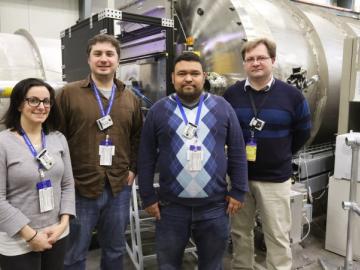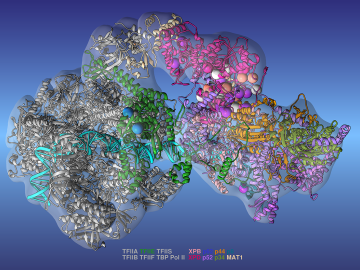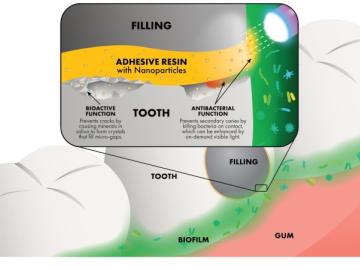
Filter News
Area of Research
News Type
News Topics
- (-) Computer Science (27)
- (-) Cybersecurity (1)
- (-) Mercury (1)
- (-) Microscopy (3)
- (-) Neutron Science (15)
- (-) Physics (4)
- (-) Space Exploration (4)
- 3-D Printing/Advanced Manufacturing (11)
- Advanced Reactors (6)
- Artificial Intelligence (9)
- Big Data (7)
- Bioenergy (4)
- Biomedical (3)
- Biotechnology (1)
- Clean Water (4)
- Composites (1)
- Energy Storage (7)
- Environment (15)
- Exascale Computing (1)
- Fusion (3)
- Grid (4)
- Machine Learning (4)
- Materials Science (13)
- Molten Salt (1)
- Nanotechnology (4)
- Nuclear Energy (16)
- Polymers (2)
- Quantum Science (5)
- Summit (6)
- Transportation (10)
Media Contacts

Sometimes solutions to the biggest problems can be found in the smallest details. The work of biochemist Alex Johs at Oak Ridge National Laboratory bears this out, as he focuses on understanding protein structures and molecular interactions to resolve complex global problems like the spread of mercury pollution in waterways and the food supply.

Scientists from the National Institute of Standards and Technology (NIST) and the University of Maryland are using neutrons at Oak Ridge National Laboratory (ORNL) to capture new information about DNA and RNA molecules and enable more accurate computer simulations of how they interact with everything from proteins to viruses.

Researchers have pioneered a new technique using pressure to manipulate magnetism in thin film materials used to enhance performance in electronic devices.

Oak Ridge National Laboratory physicists studying quantum sensing, which could impact a wide range of potential applications from airport security scanning to gravitational wave measurements, have outlined in ACS Photonics the dramatic advances in the field.

A study led by Oak Ridge National Laboratory explored the interface between the Department of Veterans Affairs’ healthcare data system and the data itself to detect the likelihood of errors and designed an auto-surveillance tool

Scientists have discovered a way to alter heat transport in thermoelectric materials, a finding that may ultimately improve energy efficiency as the materials

Tempering, the heating process that gives chocolate its appealing sheen and creamy texture, is a crucial part of crafting quality chocolate. But, at the molecular level, it gets a little tricky, and when done incorrectly, can render entire batches of chocolate gritty and unappetizing.

Environmental conditions, lifestyle choices, chemical exposure, and foodborne and airborne pathogens are among the external factors that can cause disease. In contrast, internal genetic factors can be responsible for the onset and progression of diseases ranging from degenerative neurological disorders to some cancers.

To help address the issue of dental restoration, Oak Ridge National Laboratory researchers are using neutron scattering to study how nanoparticles with antibacterial properties can be added to adhesive resins, which are used by dentists to strengthen the bond between a tooth and its polymer composite filling.

Using Summit, the world’s most powerful supercomputer housed at Oak Ridge National Laboratory, a team led by Argonne National Laboratory ran three of the largest cosmological simulations known to date.


